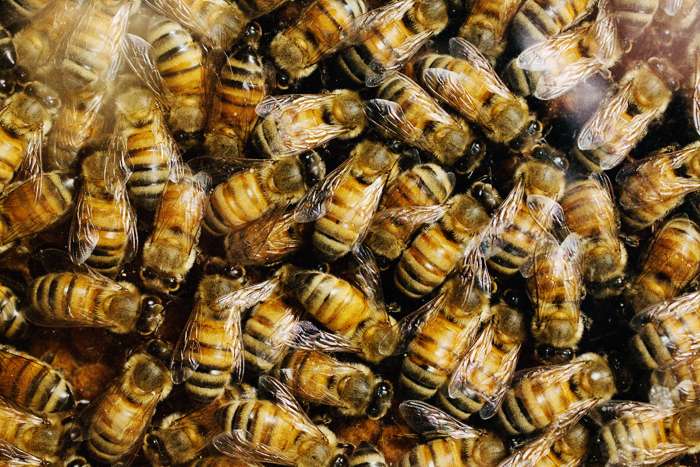Gene regulation underlies the evolution of social complexity in bees

Explaining the evolution of insect society, with sterile society members displaying extreme levels of altruism, has long been a major scientific challenge, dating back to Charles Darwin's day. A new genomic study of 10 species of bees representing a spectrum of social living - from solitary bees to those in complex, highly social colonies - offers new insights into the genetic changes that accompany the evolution of bee societies.
The new findings are reported in the journal Science.
By sequencing and comparing the genomes of ten bee species that vary in social complexity, the researchers made three important discoveries.
"First, there is no single road map to eusociality - the complex, cooperative social system in which animals behave more like superorganisms than individuals fending for themselves," said Gene Robinson, a lead on the study who is a professor of entomology and director of the Carl R. Woese Institute for Genomic Biology at the University of Illinois. "In this study, we found that independent evolutionary transitions in social life have independent genetic underpinnings."
The second insight involved changes in the evolution of gene regulation: As social complexity increased, so did the speed of changes to parts of the genome involved in regulating gene activity, located in the promoters of the genes, the researchers report.
By contrast, evolution seems to have put the brakes on changes in many parts of the genome that code for the actual proteins, Robinson said. Similarly, there was an increase in DNA methylation as social complexity increased, which also means enhanced gene regulatory capacity, he said.
"It appears from these results that gene networks get more complex as social life gets more complex, with network complexity driving social complexity," Robinson said.
A third major finding was that increases in social complexity were accompanied by a slowing, or "relaxation," of changes in the genome associated with natural selection. This effect on some genes may be a result of the buffering effect of living in a complex, interdependent society, where the "collective genome" is less vulnerable to dramatic environmental changes or other external threats, Robinson said.
"These results demonstrate once again that important new insights into evolution can be obtained by using genomes as history books," Robinson said. "We have now learned what genetic changes have occurred during the evolution of the bees, notable for their elaborate societies and essential pollination services."
More information: Genomic signatures of evolutionary transitions from solitary to group living, Science, www.sciencemag.org/lookup/doi/ … 1126/science.aaa4788
Journal information: Science
Provided by University of Illinois at Urbana-Champaign


















